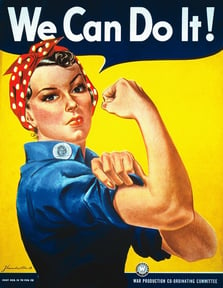
How art can change the world
BY: Alan Lynch
16 Jul 2018
The Arts Award blog, often explores different aspects of the arts, from the levels of creativity involved to its’ measurable impact: we’ve written about it all. As the academic year comes to an end, we decided to take a look at arts with a social conscience and how creative works might have a much deeper effect than we perhaps anticipate.
This month we will be considering art which concerns itself with the world we live in. Art which has a message, art designed to affect change, art which looks to make the world a better place. To start things off we are looking at the impact of art on the world around us.
Perspective is key
Changing the world might sound like an overwhelming notion but there are lots of little ways to make a difference. These ways might not end global crises or prevent natural disasters but to those involved they can mean everything.
For example, for someone diagnosed with a mental health condition something as simple as taking up an art form can have a tangible impact. There are numerous health and wellbeing benefits linked to creative activity, which we’ve covered previously on the blog.
Earlier this year, Arts & Heritage Milton Keynes and Artis worked with 150 young people on the project You, Me, Together. They offered children a platform to use the arts to explore mental health and wellbeing. It was interesting to see that those who took part displayed an increase confidence and developed new ways of expressing themselves. For some of these participants these changes could have a positive influence on them for the rest of their lives.
As well as contributing to an individual’s overall wellbeing, the arts have also helped to make young people better learners and open up new employment opportunities: two key factors towards a successful education.
Providing opportunities
Increasingly, the arts have been showcased as being important within prisons. Justice Secretary David Gauke has stated that:
“There is a role for the arts. It’s a good idea, the creative sector is a big employer, you hear stories of someone involved in a prison production who ends up in the West End as a lighting technician”
This notion is also supported by Arts Council England, who are among the contributors to a new film from the National Criminal Justice Arts Alliance (NCJAA), called Why do arts in criminal justice matter? Adding to the voices of organisations like NCJAA, The Koestler Trust, Finding Rhythms, Geese Theatre Company and others are also avid supporters of using the arts as an important rehabilitation tool for anyone in the criminal justice system.
A great example of how Arts Award supports young people who have been involved in the criminal justice system comes from Unitas, who work in the youth justice sector. Unitas include creative activities as a key part of their work, notably in their annual Summer Arts College, which delivers quality arts provision in Youth Offending Teams (YOTs) across England and Wales. 90% of participants achieve an Arts Award! As a result of this activity Unitas have reported significant reductions in reoffending rates with many young people moving back into mainstream education, training or employment.
Making a point
There is no denying that art causes change in one way or another. Over the years art has been used to comment on society’s ills, artists as varied as Ai Weiwei, Bob Dylan and Stanley Kubrick have all used their art to draw attention to events or groups which they saw as being harmful. Even work which doesn’t necessarily have a specific aim can make a difference. For example, the adoption of the lead character’s mask in V for Vendetta as a symbol of protest; hip hop being relevant to different eras of US civil rights; or Rosie the Riveter moving from wartime propaganda to peacetime feminist imagery. All are examples of art which took aim at a range of targets or has been utilised in ways not intended originally.
When art is used effectively to raise public awareness of an issue the results can often be sudden and powerful. Consider how quickly Blue Planet II’s look at how plastic was damaging the environment and how this has led to a backlash against plastic. The BBC documentary has had such an immediate impact that commonplace items like plastic cups and straws are being phased out less than a year after the episode aired. Single-use plastic was a known issue before Blue Plant II, but by making it a widespread concern the show has made it impossible to ignore.
Change keeps coming
Whether equipping young people with the tools needed as adults, offering a way out of challenging circumstances or giving a platform to address social issues; socially conscious art has time and time again proven to be effective. We’re surrounded by art and don’t always recognise the change it drives but it’s important to remember that change is happening even if it isn’t universal or directly affect all of us. In small ways and large, art can change the world.
Related posts
BY: Alan Lynch
BY: Layne Harrod




Comments & Replies